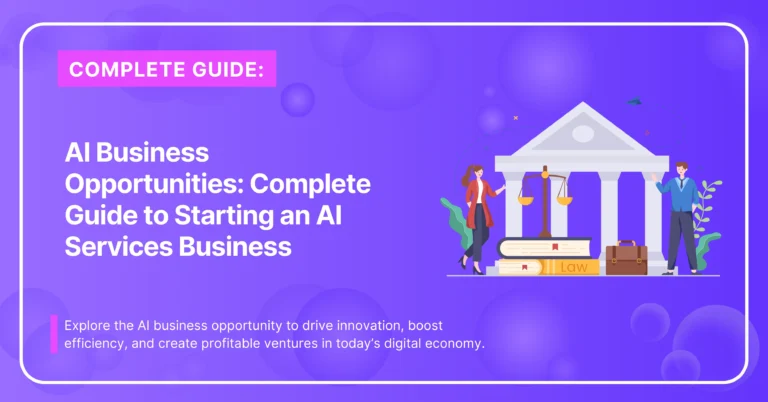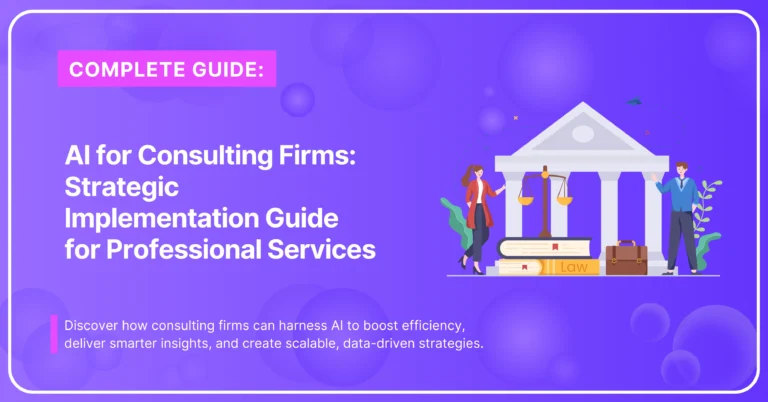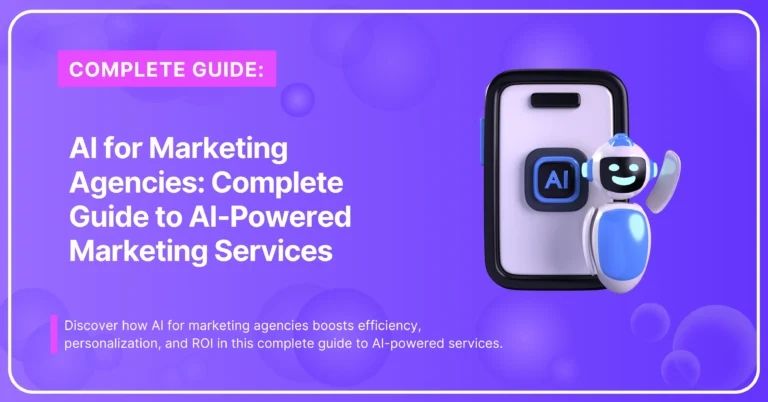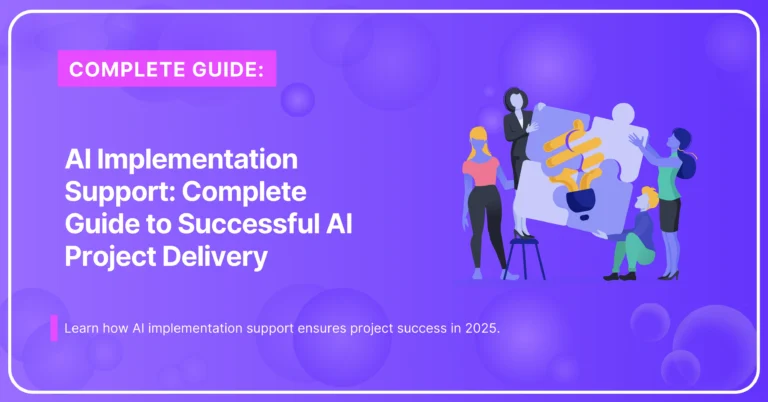Imagine 2025 as a playground of AI-driven creativity, where every IT challenge invites inventive solutions and workflows transform into moments of delight.
IT solutions provider can turn routine tasks into seamless experiences, spark fresh possibilities, and lead the next wave of innovation.

Make Money With AI
Join our Partner Programs!
Boost your reputation, drive revenue and grow your business with CustomGPT.ai.
Ready to embark on this adventure and see how AI can light up your journey.
Understanding the AI Landscape in IT Solutions
Effective AI integration starts with solid data foundations that ensure reliability and scalability. By strengthening how data is collected, stored, and governed, organizations set the stage for AI to deliver real value.
Key steps to build this foundation include:
- Conducting a data audit to identify gaps, inconsistencies, and opportunities for enrichment
- Defining clear data ownership and governance policies to maintain accuracy and compliance
- Implementing data quality checks and cleansing routines to remove duplicates, errors, and outdated records
- Upgrading or integrating legacy systems with modern data lakes or warehouses to break down silos
- Choosing cloud or hybrid architectures that balance scalability, performance, and data sovereignty needs
- Designing interoperability layers and APIs to enable seamless data sharing across tools and teams
With these measures in place, AI solutions can access high-quality, timely data – powering accurate insights, predictive analytics, and automated workflows.
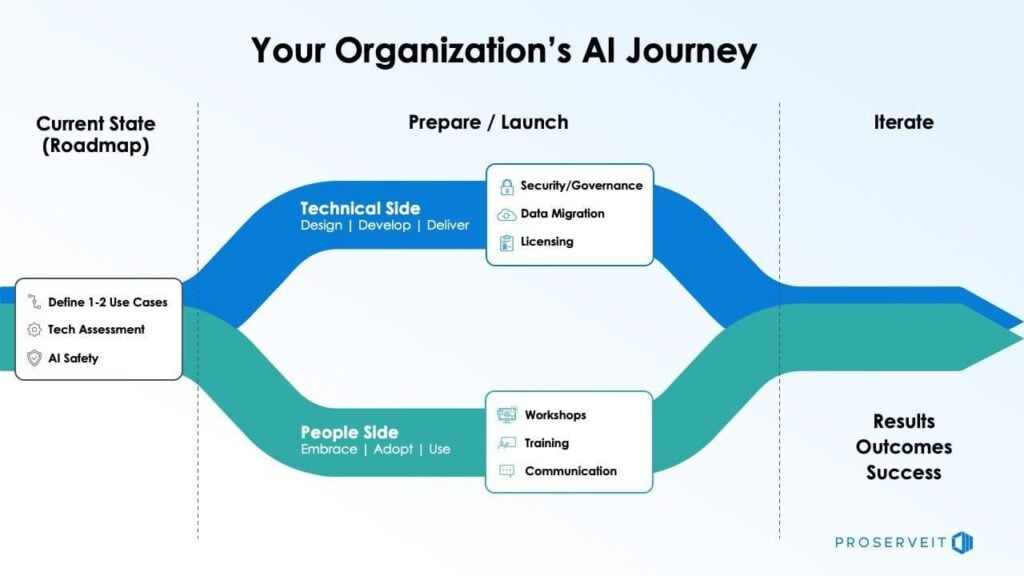
AI’s Role in Business Expansion
AI platforms play a pivotal role in expanding business potential by transforming data into strategic insights and driving proactive decision-making. Advanced analytics empower organizations to detect emerging trends, personalize offerings, and respond swiftly to market shifts.
To leverage AI effectively for sustainable growth:
- Analyze customer behavior and market data to identify new opportunities
- Personalize experiences with predictive modeling and real-time segmentation
- Launch pilot AI initiatives to validate impact and refine approaches
- Establish robust data governance for trust, compliance, and quality
- Align AI efforts with specific business objectives and critical metrics
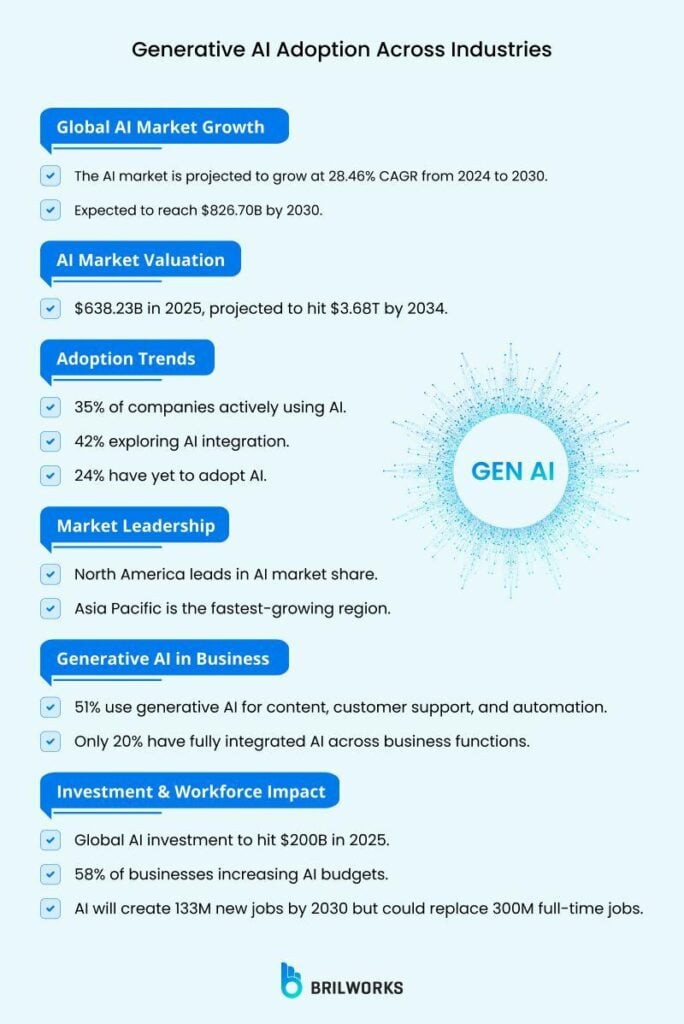
Benefits of AI in Business
AI streamlines decision-making by delivering real-time insights and predictive analytics that help teams act swiftly on changing market conditions. By automating repetitive tasks—from data entry to system monitoring—organizations free employees to focus on strategic, high-value work that drives innovation.
- Enhance decision-making with real-time insights and predictive analytics
- Automate repetitive tasks to free up teams for strategic work
- Improve customer experiences through personalization and proactive support
- Reduce operational costs by optimizing resource allocation and minimizing errors
- Drive innovation by uncovering new market opportunities and revenue streams

Identifying Opportunities for AI Integration
Not all processes are created equal when it comes to AI. Begin by identifying workflows where manual effort, delays, or complexity hold back performance and innovation.
Look for areas where automating routine tasks can free teams to focus on strategic work, and where data-driven insights can accelerate decision-making:
- Pinpoint repetitive operations such as incident management, system monitoring, and routine maintenance that consume time but generate consistent data
- Map dependencies and handoffs to find bottlenecks—use process mining tools to analyze event logs and visualize inefficiencies
- Target dynamic, high-variability processes (for example, customer support ticket routing or network optimization) where AI’s adaptive capabilities add the most value
- Assess existing tools and platforms for scalability, evaluating if they can support AI-driven automation as demand grows
- Identify decision points lacking real-time insight (such as threshold alerts or anomaly detection) where AI can provide proactive guidance
![The image is an infographic titled 'How to Adopt AI Step-By-Step for Your Business [Complete Roadmap]'. It is divided into two main sections: 'Unsure of AI' and 'Aware of the Need of AI'. The 'Unsure of AI' section includes questions like 'Use Cases?', 'Value prop?', 'Risks?', and 'Where to start?'. The 'Aware of the Need of AI' section outlines a four-step process: Step 1: AI Roadmap, Step 2: Prepare, Step 3: Launch, and Step 4: Iterate. Below these steps are four phases: Phase 0 (Not Ready for AI, No AI), Phase 1 (Not Ready for AI, No AI), Phase 2 (Ready for AI, No AI / Limited AI), and Phase 3 (Ready for AI, Using AI). Arrows indicate progression from one phase to the next.](https://customgpt.ai/wp-content/uploads/2025/07/image-2-1024x513.png)
Evaluate and Prioritize Use Cases
Once high-impact workflows are identified, it is essential to evaluate each use case by weighing its potential benefits against technical feasibility and organizational readiness.
Begin by estimating the likely business value, considering factors such as cost savings, efficiency improvements, and revenue opportunities. Then assess the maturity of your data infrastructure and the complexity of integration to determine resource requirements and potential risks.
To validate these assessments, conduct small-scale pilot projects that replicate real-world conditions, measure outcomes, and refine your models.
Finally, embed explainability mechanisms within your pilots to ensure transparency and compliance, especially in critical or regulated environments.
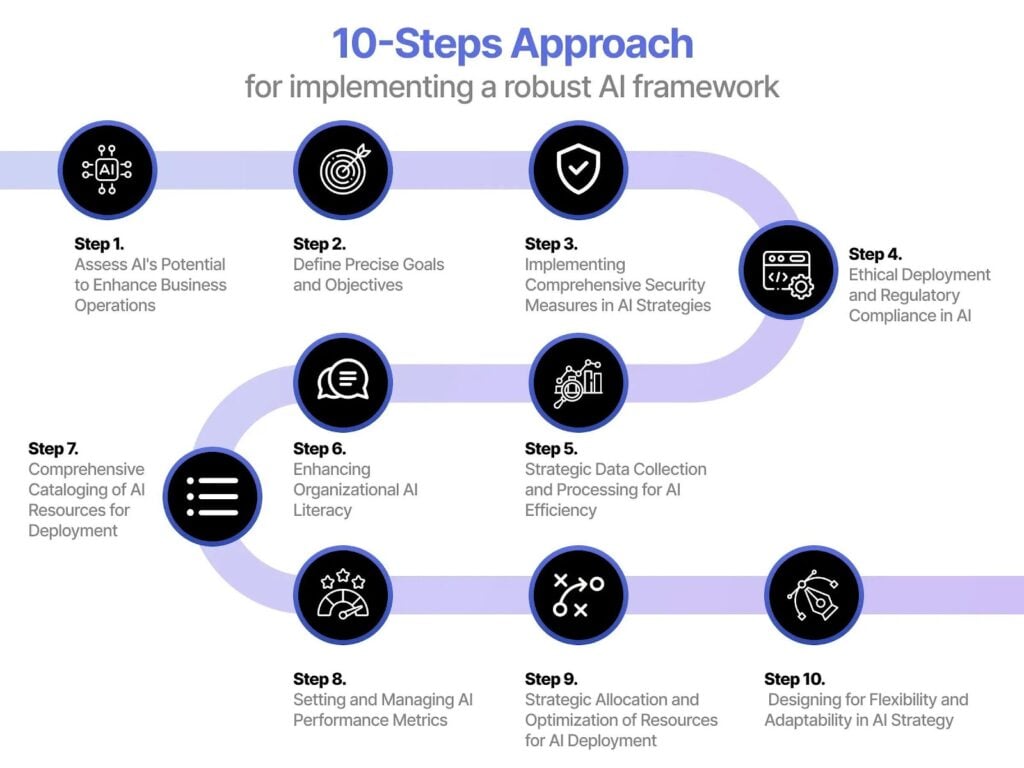
Ensuring Ongoing Model Performance
AI models rarely stay “right” forever. According to a Gartner‑cited analysis, only 53 percent of AI proof‑of‑concepts ever make it into production, highlighting how many initiatives stall without solid operational support.
Even once deployed, models can drift as data distributions shift, degrading accuracy and eroding user trust. To prevent performance degradation, you need built‑in observability from day one.
Implement:
- Automated Retraining Triggers: Monitor key metrics (accuracy, latency, throughput) and spin up retraining jobs when performance dips.
- Real‑Time Dashboards: Surface live model health data so teams can spot anomalies at a glance.
- Alerting & Incident Playbooks: Define thresholds and escalation procedures to jump on drift or failures before they impact users.
- Continuous Validation: Use canary or shadow deployments to test updates safely against real traffic.
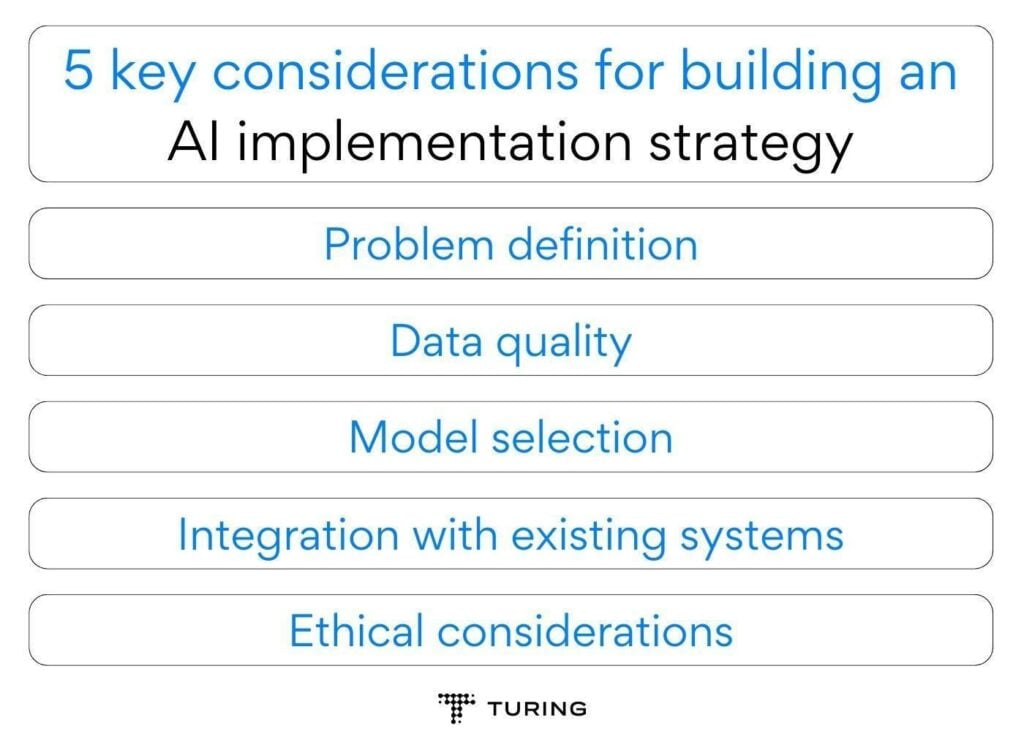
Navigating Integration Hurdles
Data variety is often the silent killer of AI at scale. A recent TechRadar report notes that 75 percent of AI initiatives fail to progress due to inconsistent schemas, evolving APIs, and disparate formats that modern and legacy systems struggle to reconcile.
To prevent this implement:
- Data Standardization Pipelines: Transform and normalize data in flight with tools like Apache NiFi or Talend, while benchmarking for latency impact.
- API‑First Middleware: Layer lightweight APIs between old and new systems to decouple dependencies and simplify future upgrades.
- Cross‑Functional Integration Teams: Combine business analysts, IT architects, and data engineers to co‑design end‑to‑end workflows and preempt technical gaps.
- Incremental Rollouts: Phase your integration in small batches to validate each connector and reduce blast radius.
- Robust Testing Frameworks: Automate end‑to‑end tests that cover data schemas, throughput, and error handling across both legacy and cloud environments.

AI and Solution Partners
In today’s fast-moving AI landscape, teaming up with an experienced solution partner turbocharges your path from pilot to production. Partners bring ready-made frameworks, battle-tested best practices, and deep technical know‑how—so you can focus on strategy, not plumbing.
They:
- Map your business goals to specific AI capabilities, ensuring each initiative delivers measurable value
- Build or extend MLOps pipelines to automate deployment, monitoring and retraining
- Bridge legacy systems and modern architectures with lightweight middleware and API layers
- Embed governance, security, and compliance controls directly into your data workflows
- Provide expert consulting, training and 24/7 support to keep your operations running smoothly
By leaning on a solution partner, you tap into best practices, avoid common pitfalls, and free your team to focus on innovation rather than infrastructure.
Introducing CustomGPT.ai Solutions Partner Program
CustomGPT.ai’s Solutions Partner Program is designed for agencies, consultancies, and system integrators eager to expand their offerings with powerful, data‑private AI solutions.
By joining, partners gain access to tools, resources, and support that accelerate time‑to‑value and open new revenue streams.
Key Features for Partners
- No‑Code Deployment: Build and launch custom AI chatbots by connecting to any website, document repository, or CRM without writing code.
- Security & Compliance: SOC 2 Type 2 and GDPR‑aligned data pipelines ensure IP protection and regulatory adherence.
- Scalable MLOps: Automated monitoring, alerting, and retraining keep models accurate as usage scales.
- Global Language Support: Out‑of‑the‑box multilingual capabilities in over 90 languages.
How to Become a Solutions Partner
- Schedule a Call: Connect with the Partner Management Team to explore how CustomGPT.ai fits into your service portfolio and discuss collaboration models.
- 15‑Day Trial: Receive hands‑on guidance to identify client pain points, map relevant AI use cases, and align solutions with strategic goals.
- Official Partnership: Unlock exclusive benefits—including discounted enterprise pricing, qualified lead referrals, and a feature in the Solutions Directory—once your trial concludes successfully.
Partner Benefits
- Enterprise Discounts & Free Trial: Significant markdown on enterprise plans plus two weeks of free access on a partner‑enterprise plan.
- Revenue Sharing: Earn up to 15 percent commission for two years on partner‑driven deals.
- Co‑Selling & Lead Referrals: Collaborate with CustomGPT.ai’s sales team on joint opportunities and receive direct referrals through the Solutions Directory.
- Priority Support & Early Access: Gain entry to new products and features first, backed by a dedicated partner support team.
- Visibility & Credibility: Feature your company in CustomGPT.ai’s global Partner Directory, showcasing your AI expertise to prospective clients.
Real‑World Success
The Endurance Group leveraged the Solutions Partner Program to build a new AI‑driven service line, achieving a 4× efficiency improvement. As a partner, they now guide clients across industries in deploying CustomGPT.ai’s advanced chatbots and analytics.

Make Money With AI
Join our Partner Programs!
Boost your reputation, drive revenue and grow your business with CustomGPT.ai.
FAQ
What distinguishes an “AI‑ready” IT solutions provider from a traditional MSP/SI?
An AI‑ready provider embeds machine learning and data science at its core rather than bolting it on as an afterthought. You’ll see:
Data maturity: End‑to‑end data engineering capabilities—ingestion, cleansing, feature stores—ready to feed models at scale
MLOps expertise: Automated pipelines for training, deployment, monitoring, and retraining rather than manual scripts
Cross‑disciplinary teams: Data scientists, ML engineers, and DevOps working alongside infrastructure and application experts
Productized AI services: Prebuilt modules (chatbots, predictive engines) that can be customized quickly, not one‑off code projects
Which existing services (cloud, security, data) pair best with AI add‑ons?
Cloud platforms: Its elasticity and native AI/ML services (training clusters, inference endpoints) make them the natural backbone for AI workloads.
Data lakes & warehouses: Centralized, governed stores allow AI models to train on unified data without siloed sources.
Identity & access management: Fine‑grained security policies (IAM, zero‑trust) ensure AI pipelines access only the right data, protecting PII and IP.
Security operations: AI‑powered SIEM and UEBA tools layer on top of existing SOC services to surface threats in real time.
How are usage‑based AI costs passed through to enterprise clients?
Metered billing: Track GPU/CPU hours, API calls, or inference requests and invoice clients at a fixed per‑unit rate.
Tiered packages: Bundle a baseline quota of compute and storage into a monthly fee, then charge overages at a predefined rate.
Value‑sharing models: Tie your margin to the business outcome (e.g. a percentage of cost savings or revenue uplift) that the AI solution delivers.
Hybrid flat + usage: Combine a flat subscription for platform access with usage fees for heavy workloads, giving budget predictability plus scalability.
What certifications do buyers now expect?
SOC 2 Type 2: Proven controls over security, availability, processing integrity, confidentiality, and privacy
ISO 27001: Globally recognized standard for information security management systems
Cloud‑AI accreditations: Vendor‑specific credentials such as AWS Machine Learning Specialty, Google Cloud Professional ML Engineer, or Azure AI Engineer Associate
GDPR & HIPAA compliance: Especially for AI services handling personal or health data
How do providers benchmark gross margin and SLA performance on AI workloads?
Cost of Goods Sold (COGS) visibility: Break out GPU/CPU costs, storage, data transfer, and support hours in granular unit economics
Gross margin targets: Aim for 40–60 percent margin on managed AI services after infrastructure and licensing, adjusting as tooling matures
SLA metrics for AI: Track inference latency (95th/99th percentile response times), uptime of model endpoints, and retraining success rates
Performance dashboards: Correlate model accuracy and business KPIs (e.g. reduction in incident MTTR) against COGS to ensure that SLAs reflect both technical and financial health
Conclusion
AI in 2025 is primed to redefine IT solutions, turning data into actionable insights and automating the mundane. By focusing on strong data foundations, targeted pilots, and resilient MLOps, organizations can keep models performing and integrate AI smoothly.
Working with a seasoned partner like CustomGPT.ai further accelerates deployment and innovation. Embrace these practices to unlock AI’s full potential and drive lasting growth.
Get Started Today
Ready to grow your AI practice? Book a call with CustomGPT.ai’s Partner Management Team to begin your 15‑day trial and join a global network of trusted AI solution providers.


